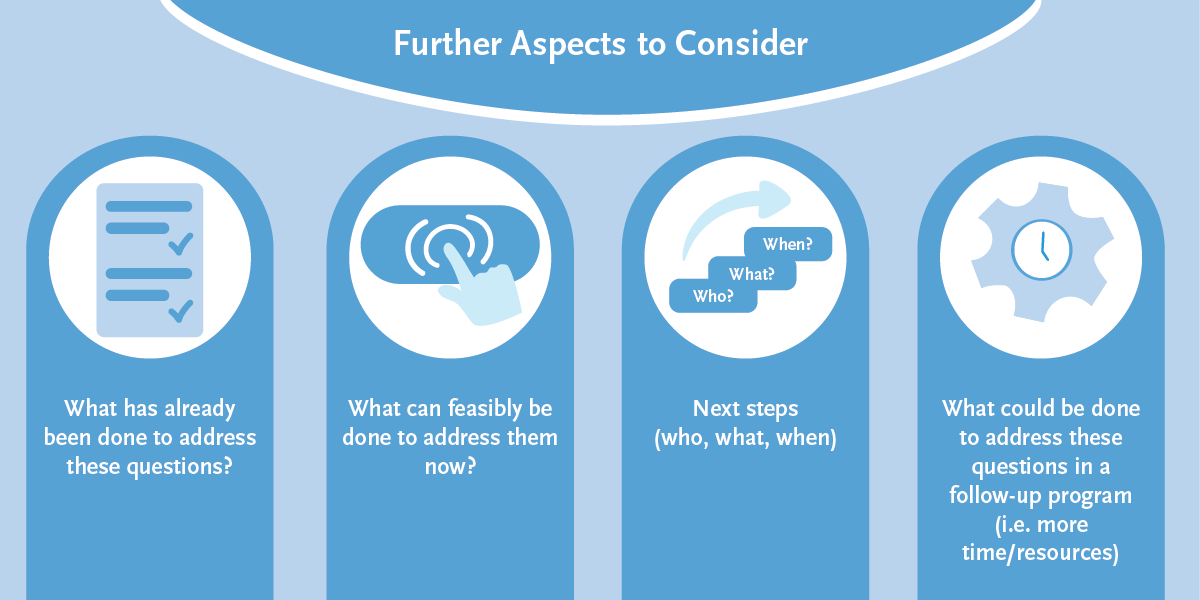
Openness and Transparency
What do we mean by Openness and Transparency and why is it helpful?
Open and informed discussions and debates with the public, which in turn can promote good scientific practice.
Getting started with Openness and Transparency
Start by sitting down and working through the self-reflection questions below. Certain questions may require further exploration. This may be in the sense of linking in with other dimensions (see below) or through the use of tools and processes to address any issues that the reflection has surfaced.
Potential questions to ask
- How will risks, uncertainties, and implications of projects be communicated?
- How can non-expert stakeholders meaningfully engage with research data and results?
- How will important project decisions (e.g., assessment criteria, changes in direction and participants) be communicated?
How these questions can be addressed
- Provide open and free access to data, results, purposes, risks, uncertainties, applications etc.
- Communicate transparently about assessment criteria
- Communicate transparently about the role of stakeholders
- Communicate transparently about limitations with regard to transparency
Further aspects to consider are presented below.

Potential methods and tools to engage with this dimension |
|
Linking into different dimensions and next steps
Each dimension is not a separate area to work through as a tick-box process. Instead, they should all flow into each other. Working through each of the dimension's self-reflection questions will help you think about the connections you may have missed.
An example of linking openness and transparency into a different dimension.
Thinking through openness and transparency may lead you to identify and declare conflicts of interest. This, in term, may require adaptions to your work, as you respond to issues raised by the conflict of interest or others' perceptions of this conflict.
Explore other dimensions
